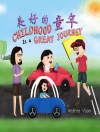Fairy lore started with oral tradition and word of mouth when people who share “sightings” of these beings insisted that they truly exist. Fairies and other mythological creatures gained widespread popularity in the 18th to the 20th century because of their portrayal in various forms of literature. Authors like The Brothers Grimm, Charles Perrault, Hans Christian Andersen, and Joseph Jacob included fairies in their books and often associate them with wishes and punishment. Fairies have been referenced not only in literature but also in pop culture, music, and multimedia. Over the years, the fairies’ appearance changed from the image of a beautiful woman to ugly and vengeful females, to short and stout hat-wearing beings. They have been represented in films like Peter Pan, who brought forth the most common persona of fairies in its character, Tinkerbell. Today, fairies are known to have diminutive figures while having a great sense of mischief and revenge. However, there are more fairies in the world as there are other creatures of lore. In this topic, we shall discuss the different kinds of fairies from around the world and how they originated.
This series features some of the most popular mythical creatures that have prevailed across the globe. Despite having no solid proof regarding their existence, legends and stories about them continue to persist in the modern world.
Features include
- Perfect for readers ages 6 – 12 years old
- Non-fiction chapter books perfect for the family
- Easy to read stories any young reader can enjoy
- Features various folklore surrounding mythological creatures to foster the imagination and creativity of young readers












